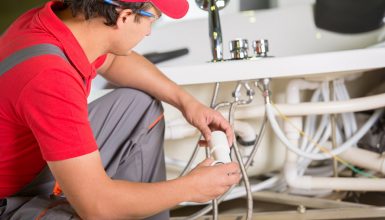My Thorough Advice to Resolving Low Water Pressure in Your Home
My Thorough Advice to Resolving Low Water Pressure in Your Home
Blog Article
What're your opinions regarding 10 Reasons for Low Water Pressure in Your House?

Low water stress in your house can be an irritating problem, impacting whatever from showering to washing dishes. If you're experiencing weak water flow, there are several feasible causes and solutions to explore. In this guide, we'll talk about usual reasons for low tide pressure and practical steps to address the concern successfully.
Intro to Low Water Pressure
Low water stress occurs when the circulation of water from your faucets, showers, and various other components is weak than typical. This can make day-to-day jobs much more difficult and much less reliable. Recognizing the sources of low tide stress is essential to finding the appropriate service.
Typical Sources Of Low Tide Stress
Pipeline Obstructions
Gradually, pipelines can become obstructed with natural resource, debris, or debris, limiting the circulation of water. This is a typical issue in older homes with galvanized steel pipelines.
Rust
Deterioration within pipes can result in leaks and reduced water pressure. Rust build-up can restrict water circulation, particularly in maturing plumbing systems.
Faulty Stress Regulators
Stress regulatory authorities are in charge of maintaining consistent water pressure in your home. If they malfunction, it can lead to low tide pressure or unequal flow throughout your home.
Municipal Supply Of Water Issues
Occasionally, the problem exists outside your home. Municipal water system problems, such as main line leaks or maintenance job, can briefly lower water pressure in your area.
How to Identify Low Water Pressure
Inspecting Faucets and Components
Begin by checking the water stress at various taps and fixtures throughout your home. If the concern is isolated to details areas, it may indicate localized issues.
Examining Pipelines
Inspect visible pipes for indicators of leaks, corrosion, or clogs. Focus on any type of uncommon audios, such as knocking or rattling pipelines, which might suggest concerns within the plumbing system.
Consulting with a Plumber
If you're incapable to identify the source of low water pressure, consider employing a specialist plumber to perform a comprehensive examination. They can recognize underlying issues and recommend appropriate services.
Do It Yourself Solutions to Deal With Low Water Stress
Cleaning Aerators and Showerheads
Natural resources can collect in aerators and showerheads, decreasing water circulation. Eliminate and cleanse these elements consistently to improve water pressure.
Flushing Water Heater
Debris build-up in the hot water heater can limit flow and lower effectiveness. Purging the container regularly helps get rid of sediment and keep optimal performance.
Examining Pressure Regulator
Make sure that the stress regulator is operating appropriately. Readjusting or replacing the regulator can assist recover proper water stress throughout your home.
Clearing Clogs in Pipes
For minor clogs, try making use of a plumbing snake or chemical drain cleaner to clear blockages in pipes. Be cautious when making use of chemicals and comply with security standards.
When to Call a Professional Plumber
If DIY initiatives stop working to solve the issue or if you believe significant plumbing problems, it's finest to seek assistance from an accredited plumber. They have the knowledge and tools to resolve complicated concerns safely and successfully.
Safety Nets to Maintain Water Pressure
Normal Upkeep
Set up routine maintenance for your plumbing system to prevent concerns such as corrosion, leaks, and obstructions. Attending to small issues early can aid avoid even more considerable repair work later.
Mounting a Pressure Booster
Take into consideration installing a stress booster pump to enhance water pressure in areas with consistently low circulation. This can be specifically valuable for multi-story homes or residential properties with high-demand components.
Surveillance Water Usage
Be mindful of water use practices and prevent overtaxing the plumbing system. Basic modifications, such as incredible showers and washing tons, can aid preserve sufficient water pressure.
Conclusion
Dealing with low water pressure can be aggravating, but recognizing the underlying causes and implementing ideal services can restore ideal circulation throughout your home. Whether it's cleaning up aerators, evaluating pipelines, or seeking advice from a plumber, taking proactive steps can make certain a steady supply of water for your everyday requirements.
FOUR WAYS TO FIX LOW WATER PRESSURE NOW
Turning on a shower or faucet only to find the water comes out in a sad, slow drizzle is never a good feeling. How exactly are you supposed to wash a pan or take a quick shower when it takes 10 minutes just to rinse off a little soap? The good news is that when your water pressure is bad, there's always a cause: typically one that can be easily fixed. Here are some of the most common causes of low pressure and what you can do to fix the issue:
DEBRIS AND MINERAL DEPOSIT BUILDUPS
If you notice low water pressure from just one or two of the fixtures in your house, the problem likely has to do with debris buildup. Water is full of minerals and other debris, all of which can accumulate in your pipes and on your fixtures. This can cause a blockage that affects how much water flows through. To fix this, try filling a small plastic bag with white vinegar, and use a rubber band to hang it around your showerhead or faucet. Let the head of the fixture soak for a few hours, and the vinegar should loosen the deposits.
WATER LEAKS
Leaks are another common cause of low water pressure. If water is flowing out of your plumbing through a hole or crack before it can reach your fixture, the pressure coming out of the faucet or showerhead will be lower. A plumbing professional is your best bet for finding and repairing a leak in your water supply pipes.
Leaks are another common cause of low water pressure. If water is flowing out of your plumbing through a hole or crack before it can reach your fixture, the pressure coming out of the faucet or showerhead will be lower. A plumbing professional is your best bet for finding and repairing a leak in your water supply pipes.
FOUR WAYS TO FIX LOW WATER PRESSURE NOW
Turning on a shower or faucet only to find the water comes out in a sad, slow drizzle is never a good feeling. How exactly are you supposed to wash a pan or take a quick shower when it takes 10 minutes just to rinse off a little soap? The good news is that when your water pressure is bad, there's always a cause: typically one that can be easily fixed. Here are some of the most common causes of low pressure and what you can do to fix the issue:
DEBRIS AND MINERAL DEPOSIT BUILDUPS
If you notice low water pressure from just one or two of the fixtures in your house, the problem likely has to do with debris buildup. Water is full of minerals and other debris, all of which can accumulate in your pipes and on your fixtures. This can cause a blockage that affects how much water flows through. To fix this, try filling a small plastic bag with white vinegar, and use a rubber band to hang it around your showerhead or faucet. Let the head of the fixture soak for a few hours, and the vinegar should loosen the deposits.
WATER LEAKS
Leaks are another common cause of low water pressure. If water is flowing out of your plumbing through a hole or crack before it can reach your fixture, the pressure coming out of the faucet or showerhead will be lower. A plumbing professional is your best bet for finding and repairing a leak in your water supply pipes.
Leaks are another common cause of low water pressure. If water is flowing out of your plumbing through a hole or crack before it can reach your fixture, the pressure coming out of the faucet or showerhead will be lower. A plumbing professional is your best bet for finding and repairing a leak in your water supply pipes.
A VALVE ISSUE
If you have low water pressure throughout your home, check your main shut-off valve to make sure it's completely open. You may also want to see if there's a pressure-reducing valve installed. If there is, have a plumber help you adjust the settings to get the pressure you're looking for.
OTHERS USING WATER
Believe it or not, your low water pressure could be caused by your neighbors. If you notice low pressure at certain times of day, it may be because you and the people living next to you have similar schedules - when everyone is showering at the same time, the pressure will be lower in every home. Low pressure throughout the neighborhood may also be caused by an issue with your municipal water supply. If that's the case, call the supplier to see if they're working on the issue.
https://www.rotorooter.com/blog/water-leaking/low-water-pressure-fixes/

I'm certainly very fascinated by Dealing with Low Water Pressure in Your Home and I hope you appreciated the entire piece. Are you aware of somebody else who is interested in the topic? Please feel free to promote it. We enjoy reading our article about Dealing with Low Water Pressure in Your Home.
Contact Us Now Report this page